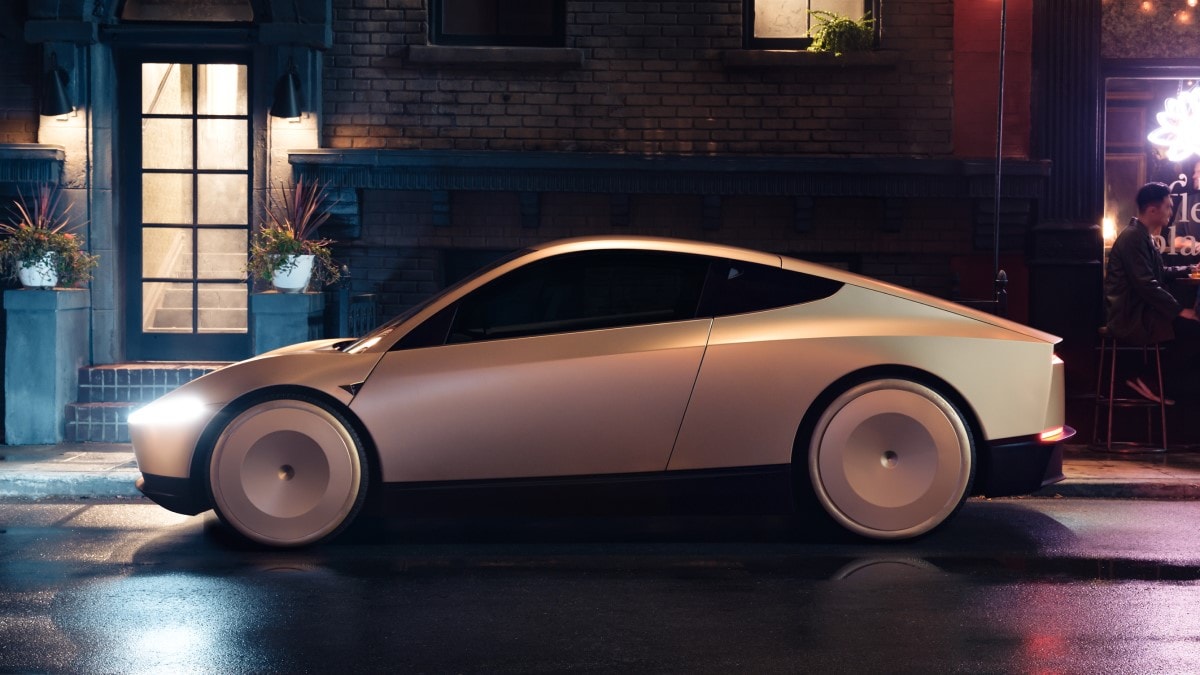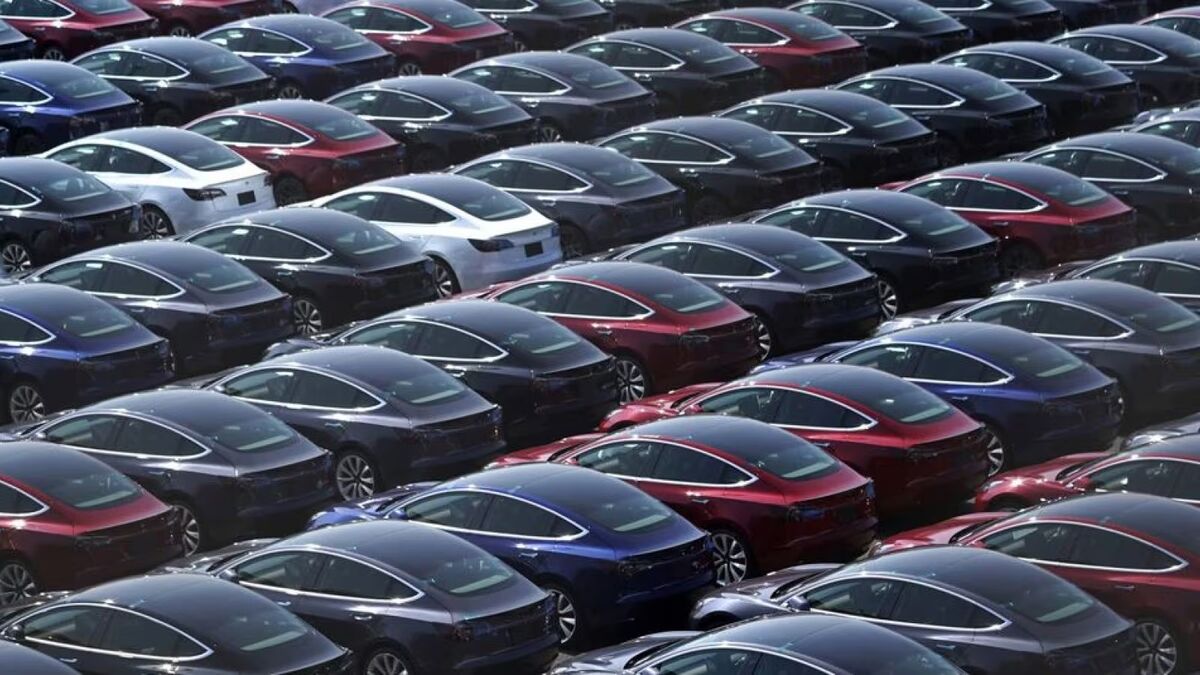Last night, Tesla unveiled a long-promised self-driving car with no pedals or steering wheel. The company’s stock price dropped following the announcement. CNBC notes, “Tesla stock was down 5.8% as of 6:33 a.m. ET in premarket trading on Friday,” after the Thursday night reveal.
Related – Self-Driving Cars: Everything You Need To Know
Early reactions to the Tesla Robotaxi have been mixed, and the project’s status remains cloudy even after a high-energy event to unveil it. There were some surprises, and many questions remain.
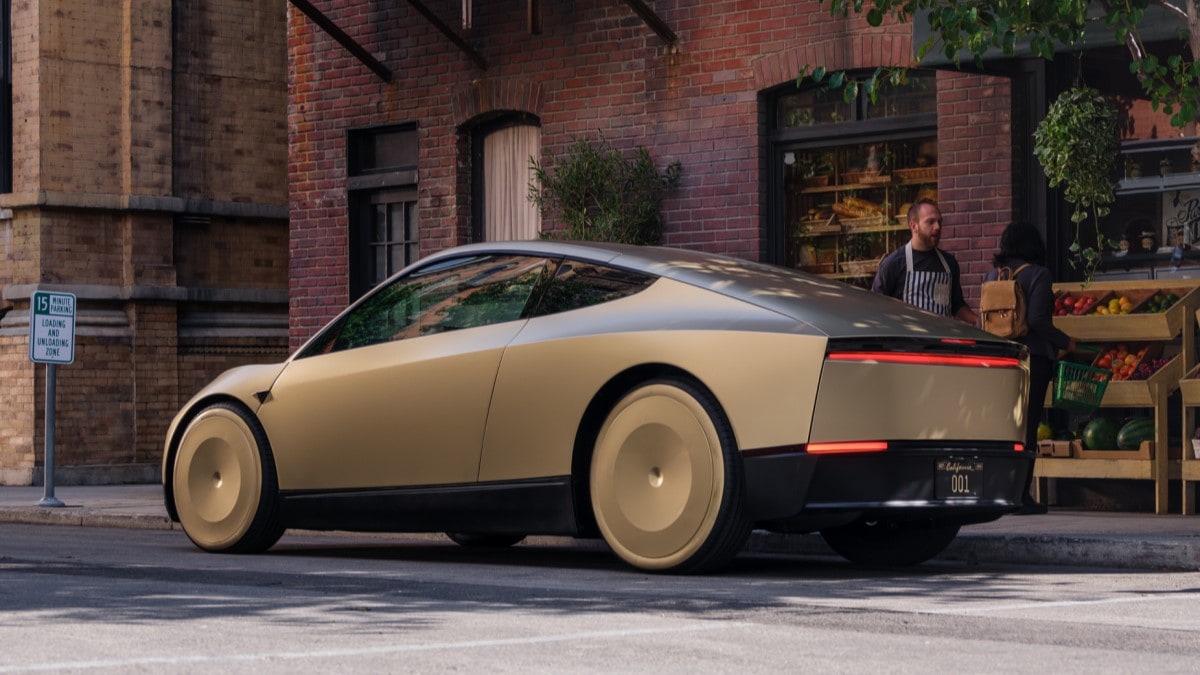
Liquid Metal Teardrop Look
If I told you Tesla designers somehow managed to meld the iconic lozenge design language of the Model 3 and Model Y with the futuristic, hewn-metal look of the Cybertruck, you’d probably have your doubts. But look at it.
The Robotaxi somehow takes the design scheme of Tesla sedans and updates it with Cybertruck hard edges and a stainless steel look (it’s likely not stainless steel this time). Disk-like wheels enhance aerodynamics and lend it a future feel.
The Robotaxi lacks a rear window, Polestar-4-style. Its two butterfly doors open up and slightly forward, like a beetle opening its carapace to unfurl its wings.
Inside, two seats wrapped in silver upholstery face a touchscreen. They share an armrest. That’s it — that’s the cabin. The Robotaxi has no pedals, steering wheel, or other control interfaces.
Tesla provided no performance details beyond noting that it is an electric vehicle (EV), like all Tesla products.
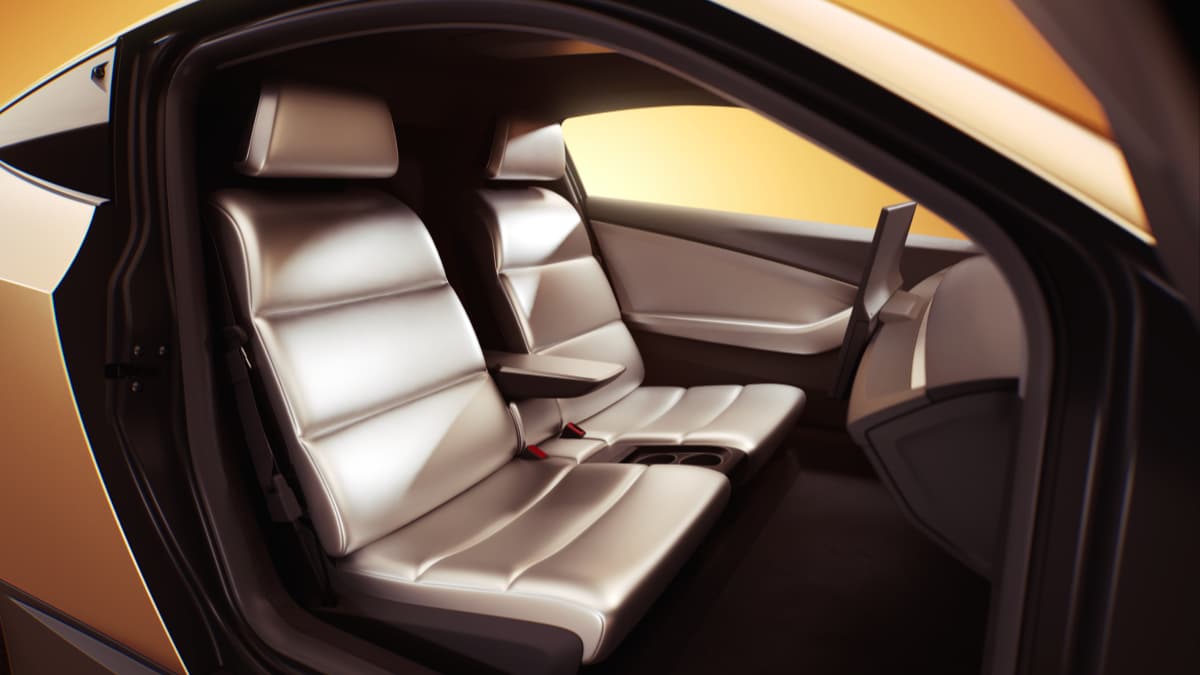
Input Your Destination and Sit Back
Tesla says it doesn’t need control surfaces because it drives itself. “You could fall asleep and wake up at your destination,” CEO Elon Musk told a crowd gathered for the reveal at a Los Angeles movie studio.
The Robotaxi will reportedly use a future version of the software Tesla calls “Full Self-Driving (Supervised),” which is available on all of its cars for sale today. The system allows the vehicle to accelerate, steer, and brake itself on highways and neighborhood streets, provided that a human is there to correct its mistakes.
Musk did not explain how or when the software would be ready to function without human supervision.
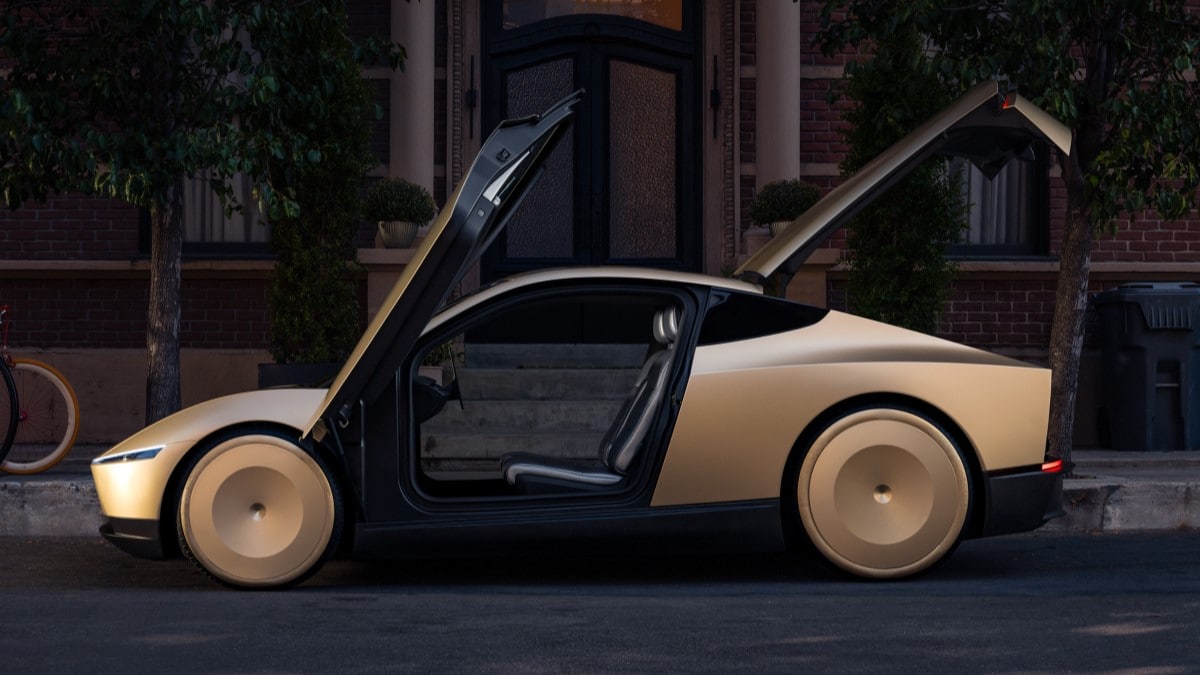
Tesla Says You Can Buy One — or a Few
The big surprise? You’ll be able to buy your own, the company says. “Musk said the company would start building the fully autonomous Cybercab by 2026 at a price of less than $30,000,” the Washington Post explains.
Tesla has long promised owners they would someday be able to let their cars function as taxis when they’re not driving them, bringing in extra income. At last night’s event, Reuters reports, “Musk promised that the company’s popular Model 3 and Model Y vehicles would be able to operate without driver supervision in California and Texas by next year.”
Now, Tesla appears to intend the same for its Robotaxi. The company plans to operate its fleet of Robotaxis but will also sell them to individuals.
Musk, however, was light on details. He said the car would “probably” be in production before 2027 but added, “I tend to be a little optimistic.” Tesla has repeatedly missed production deadlines for hyped products – its Cybertruck finally arrived in late 2023, four years late.
Some customers placed reservations on a sports car promised in 2017 and are still waiting for a production date seven years later.
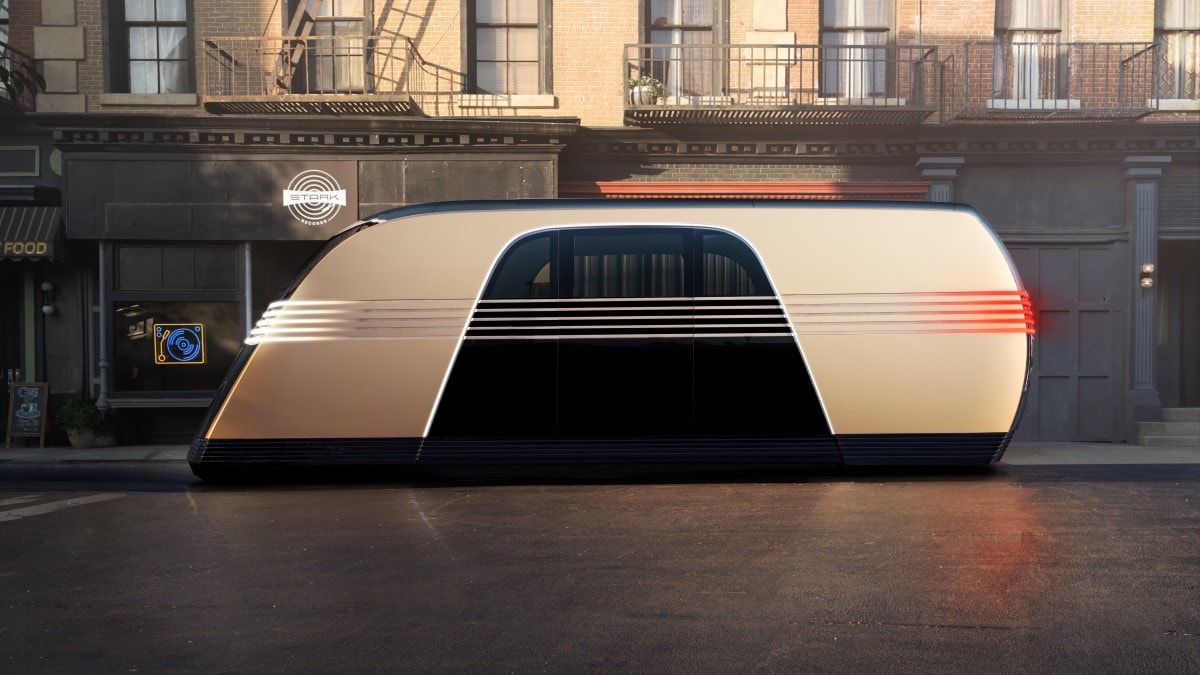
Surprise Van, Too
Musk often ends reveal events with a surprise, and he didn’t disappoint last night. The Robotaxi reveal also included a “Robovan,” a “much larger EV with hidden wheels and no real windshield,” according to Yahoo Finance.
The van, which has a decidedly Art Deco design, looks like a dream of the future from the 1920s. Musk said it would carry up to 20 passengers but offered no production details.
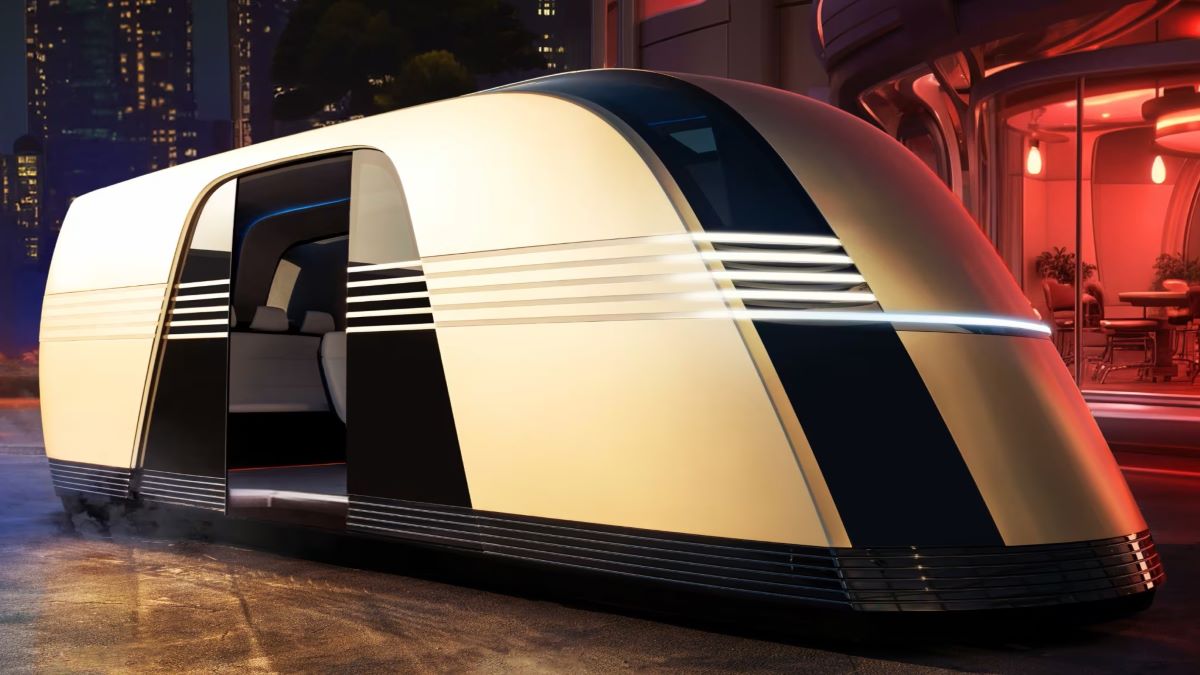
Robotaxis Are Nothing New
Investors usually greet a new Tesla product with a stock price rally. They notably did not react enthusiastically to the Robotaxi.
The Wall Street Journal’s related headline, “Tesla’s Robotaxi Event Disappoints Investors,” is a new experience for Musk’s company.
One reason reaction is so muted? Robotaxis are nothing new.
The New York Times notes, “Waymo, a subsidiary of Google’s parent company, has been operating a driverless taxi service for years. It recently said its cars were providing more than 100,000 rides a week in San Francisco, Phoenix and Los Angeles. Cruise, a unit of General Motors, recently restarted testing driverless taxis after one of its cars hit and dragged a pedestrian last year in San Francisco.” Amazon’s Zoox subsidiary plans its own service and has a driverless van already in testing.
Overseas, China’s Baidu has a similar product in testing on public streets.
Large companies with long-established histories have struggled to make the model successful.
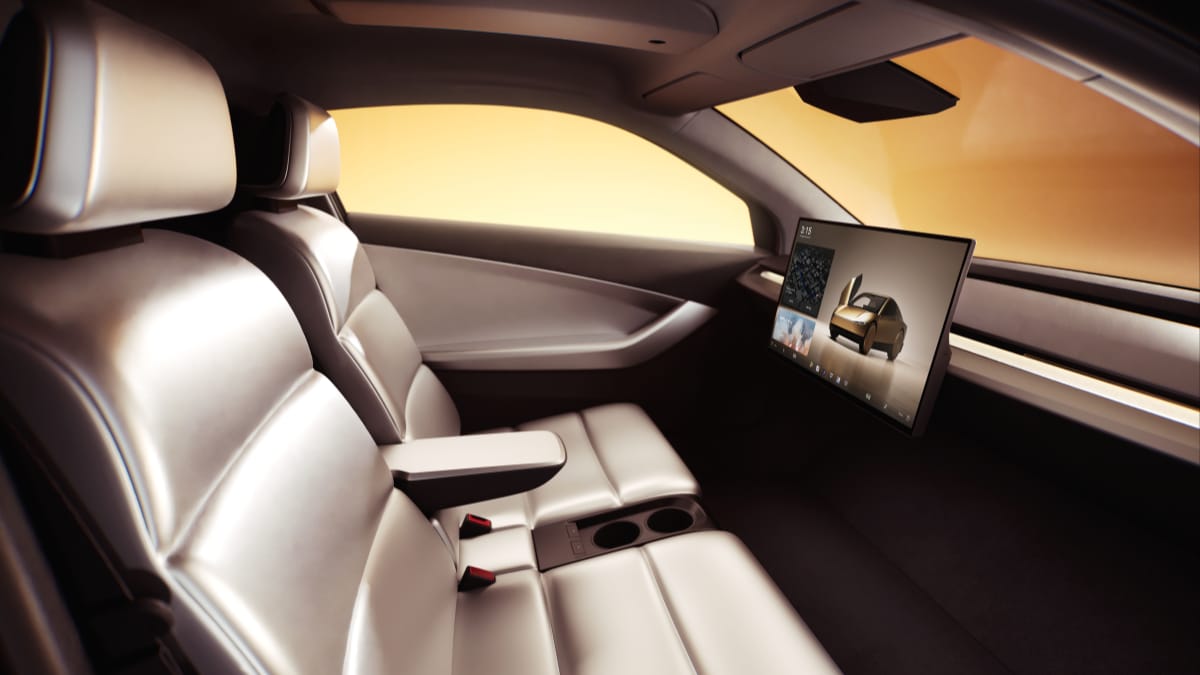
Often Perceived as Industry Leader; Sometimes Behind
Some are also worried about the software behind the cars. The public, particularly the social-media-engaged public, tends to perceive Tesla as the auto industry’s leader in early attempts at self-driving technology.
The picture outside social media is darker for Tesla. The auto industry uses a 5-level system to classify automation systems. Most automakers now have Level 2 technology, like Tesla’s Full Self-Driving (Supervised). Only Mercedes-Benz has a Level 3 system that legally allows drivers to look away from the roadway. That system is permitted only in Nevada and parts of California.
We’re aware of only one major consumer-based study of automation systems. Consumer Reports testing found Ford’s BlueCruise system the best, ranking Tesla’s efforts eighth among major automakers.
Notably, Tesla uses only cameras to attempt to understand the world around it. The New York Times explains, “Most other carmakers also use laser sensors to detect people and objects.” Some include ultrasonic and radar sensors as well.
Legal Questions Abound
Finally, investors are aware of complex, unresolved legal issues surrounding autonomous driving. State governments regulate driver assistance systems, so 50 separate legal systems will need to evolve to answer questions like insurance requirements, liability for accidents, and how autonomous cars interact with emergency services.
Companies like Waymo have won permission to operate in limited areas within certain cities, often with remote human supervision. However, they’ve also seen permission revoked and modified regularly as robot taxis have caused accidents or interfered with the work of emergency responders.
Tesla’s Structure Evolving
For most of its existence, Tesla followed a simple business plan. It sold cars, beginning with expensive models. As sales of those recouped the research costs required to build them, it introduced more affordable models.
It kept them in a walled garden, using a charging system unique to Tesla products and earning money from a nationwide network of chargers.
However, Musk has muddied that picture. Last year, he canceled a long-planned inexpensive Model 2 in favor of the Robotaxi product, saying Tesla was now more an automation company than a car company.
He also took down the garden wall, letting other automakers and other charging networks use Tesla charging technology. One by one, the rest of the auto industry is switching to the Tesla-style charging plug. That simplifies life with an EV but relinquishes a critical competitive advantage for Tesla.
Can Tesla switch to selling autonomous cars and make that technology work where GM, Google, and others have failed?
It’s a risky strategy switch. With Musk courting controversy daily by immersing himself in the contentious U.S. presidential election, investors are nervous.
